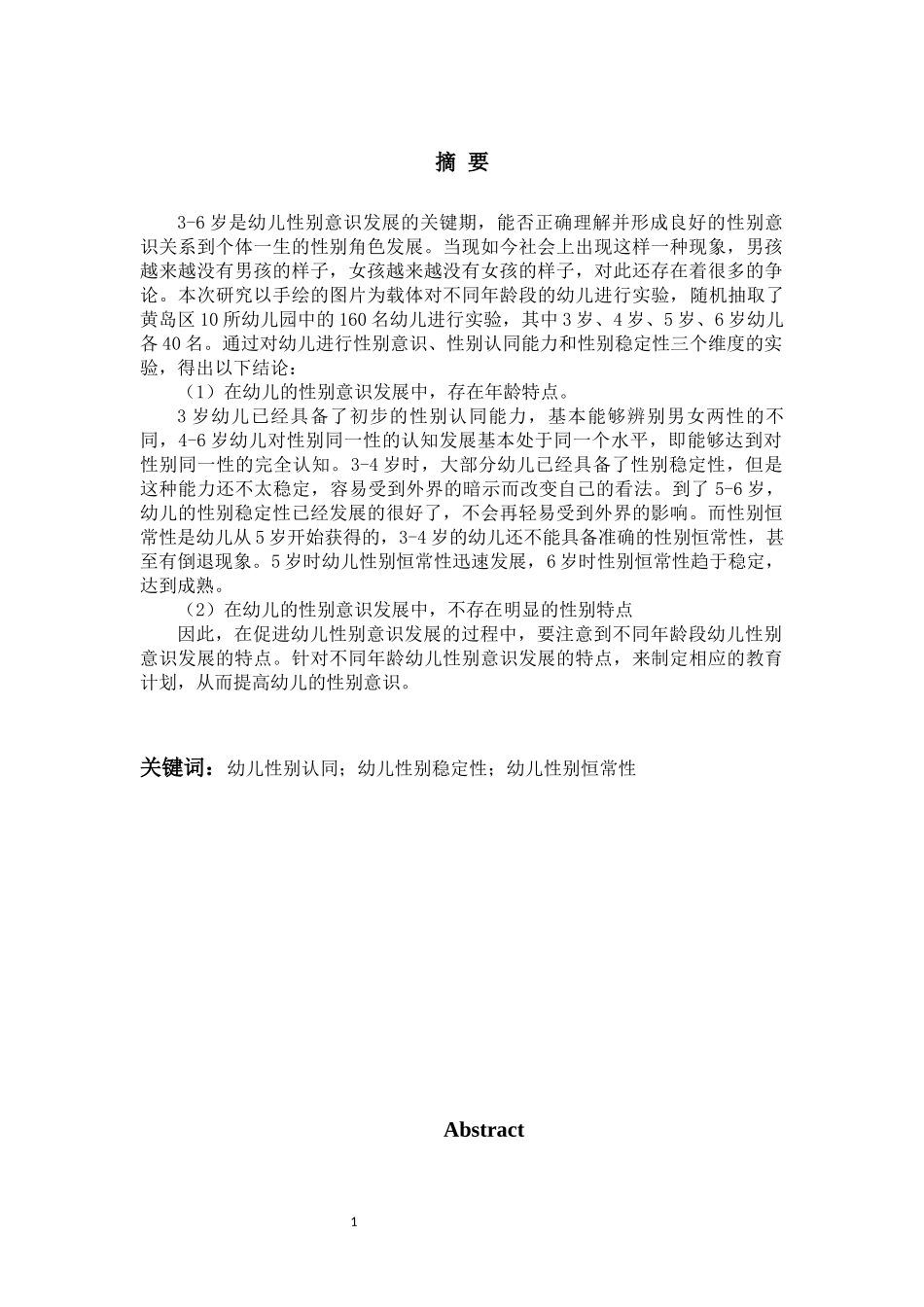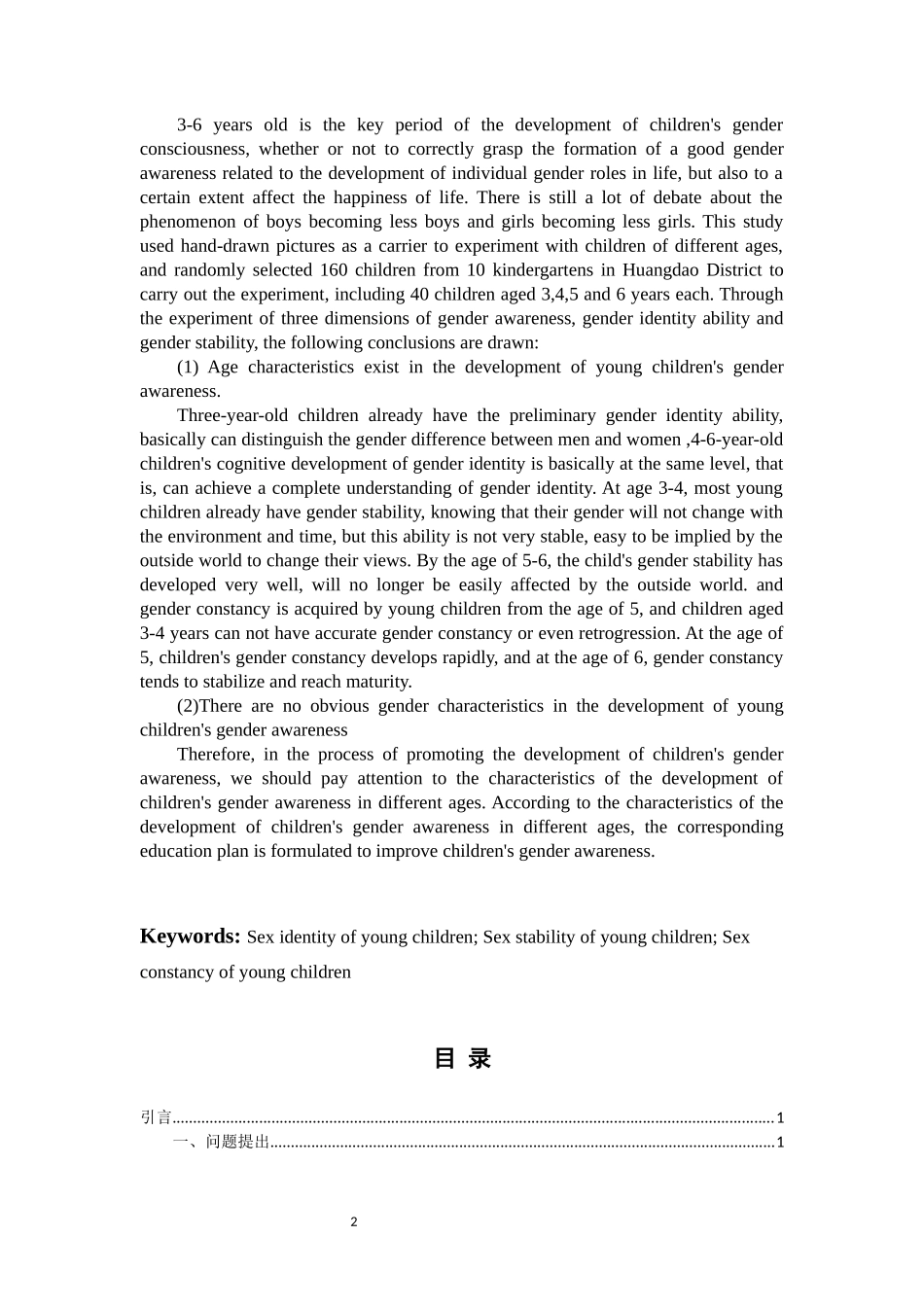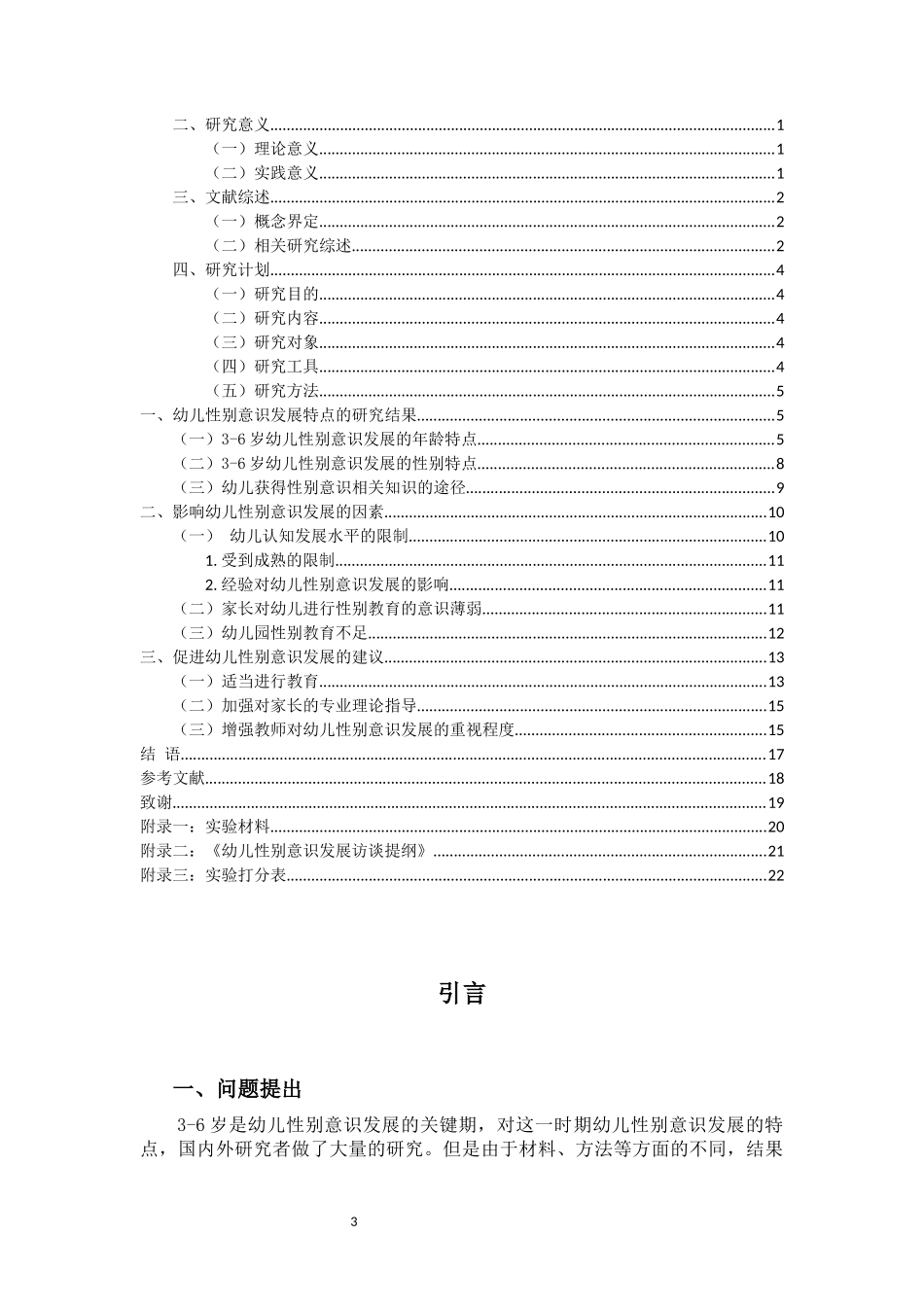1摘 要3-6 岁是幼儿性别意识发展的关键期,能否正确理解并形成良好的性别意识关系到个体一生的性别角色发展。当现如今社会上出现这样一种现象,男孩越来越没有男孩的样子,女孩越来越没有女孩的样子,对此还存在着很多的争论。本次研究以手绘的图片为载体对不同年龄段的幼儿进行实验,随机抽取了黄岛区 10 所幼儿园中的 160 名幼儿进行实验,其中 3 岁、4 岁、5 岁、6 岁幼儿各 40 名。通过对幼儿进行性别意识、性别认同能力和性别稳定性三个维度的实验,得出以下结论:(1)在幼儿的性别意识发展中,存在年龄特点。3 岁幼儿已经具备了初步的性别认同能力,基本能够辨别男女两性的不同,4-6 岁幼儿对性别同一性的认知发展基本处于同一个水平,即能够达到对性别同一性的完全认知。3-4 岁时,大部分幼儿已经具备了性别稳定性,但是这种能力还不太稳定,容易受到外界的暗示而改变自己的看法。到了 5-6 岁,幼儿的性别稳定性已经发展的很好了,不会再轻易受到外界的影响。而性别恒常性是幼儿从 5 岁开始获得的,3-4 岁的幼儿还不能具备准确的性别恒常性,甚至有倒退现象。5 岁时幼儿性别恒常性迅速发展,6 岁时性别恒常性趋于稳定,达到成熟。(2)在幼儿的性别意识发展中,不存在明显的性别特点因此,在促进幼儿性别意识发展的过程中,要注意到不同年龄段幼儿性别意识发展的特点。针对不同年龄幼儿性别意识发展的特点,来制定相应的教育计划,从而提高幼儿的性别意识。关键词:幼儿性别认同;幼儿性别稳定性;幼儿性别恒常性Abstract23-6 years old is the key period of the development of children's gender consciousness, whether or not to correctly grasp the formation of a good gender awareness related to the development of individual gender roles in life, but also to a certain extent affect the happiness of life. There is still a lot of debate about the phenomenon of boys becoming less boys and girls becoming less girls. This study used hand-drawn pictures as a carrier to experiment with children of different ages, and randomly selected 160 children from 10 kindergartens in Huangdao District to carry out the experiment, including 40 children aged 3,4,5 and...












